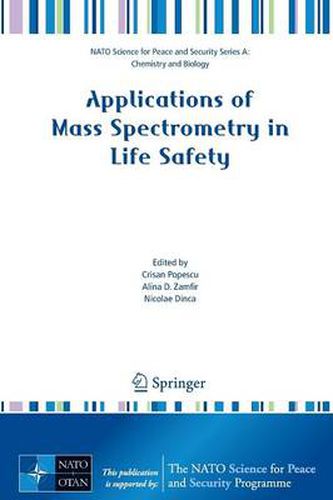Readings Newsletter
Become a Readings Member to make your shopping experience even easier.
Sign in or sign up for free!
You’re not far away from qualifying for FREE standard shipping within Australia
You’ve qualified for FREE standard shipping within Australia
The cart is loading…






This title is printed to order. This book may have been self-published. If so, we cannot guarantee the quality of the content. In the main most books will have gone through the editing process however some may not. We therefore suggest that you be aware of this before ordering this book. If in doubt check either the author or publisher’s details as we are unable to accept any returns unless they are faulty. Please contact us if you have any questions.
Mass spectrometry (MS) along with its hyphenated techniques is capable of high throughput, sensitivity, accuracy and selectivity for the analysis of structure and composition of almost any product. Like in electrophoresis, MS separates mo- cules based on the mass-to-charge ratio. In case of gel electrophoresis (SDS- PAGE), a well-known and efficient bioanalytical technique, proteins bear negative charges but have the same charge density, so proteins are separated according to their size. Similarly, in case of MS analysis, proteins carry the same charge, and are separated by their molecular weight. Unlike SDS-PAGE, however, modern ultra high resolution MS discerns very small mass differences and can resolve and completely identify in a single experiment species of the same nominal mass in complex biological mixtures. Consequently, MS can be used for the structural characterization, identification and sensitive detection of mixtures of biomolecules or for assessing the quality of isolated proteins (purity, integrity, or post-translational modifications, for example), carbohydrates, nucleic acids, drugs, metabolites, pollutants etc. In the post-genome era, MS is continuously developing as one of the most re- able analytical method for elucidating the structure of molecules originating from various biological matrices. The potential of MS for high-sensitive structural a- lyses became unsurpassable after the introduction of electrospray (ESI) and matrix assisted laser/desorption ionization (MALDI) methods, on one hand, and the pos- bility to deduce in detail unknown biopolymer structures by highly accurate mo- cular mass measurement followed by sequencing using dissociation techniques based on multiple stage MS, on the other.
$9.00 standard shipping within Australia
FREE standard shipping within Australia for orders over $100.00
Express & International shipping calculated at checkout
This title is printed to order. This book may have been self-published. If so, we cannot guarantee the quality of the content. In the main most books will have gone through the editing process however some may not. We therefore suggest that you be aware of this before ordering this book. If in doubt check either the author or publisher’s details as we are unable to accept any returns unless they are faulty. Please contact us if you have any questions.
Mass spectrometry (MS) along with its hyphenated techniques is capable of high throughput, sensitivity, accuracy and selectivity for the analysis of structure and composition of almost any product. Like in electrophoresis, MS separates mo- cules based on the mass-to-charge ratio. In case of gel electrophoresis (SDS- PAGE), a well-known and efficient bioanalytical technique, proteins bear negative charges but have the same charge density, so proteins are separated according to their size. Similarly, in case of MS analysis, proteins carry the same charge, and are separated by their molecular weight. Unlike SDS-PAGE, however, modern ultra high resolution MS discerns very small mass differences and can resolve and completely identify in a single experiment species of the same nominal mass in complex biological mixtures. Consequently, MS can be used for the structural characterization, identification and sensitive detection of mixtures of biomolecules or for assessing the quality of isolated proteins (purity, integrity, or post-translational modifications, for example), carbohydrates, nucleic acids, drugs, metabolites, pollutants etc. In the post-genome era, MS is continuously developing as one of the most re- able analytical method for elucidating the structure of molecules originating from various biological matrices. The potential of MS for high-sensitive structural a- lyses became unsurpassable after the introduction of electrospray (ESI) and matrix assisted laser/desorption ionization (MALDI) methods, on one hand, and the pos- bility to deduce in detail unknown biopolymer structures by highly accurate mo- cular mass measurement followed by sequencing using dissociation techniques based on multiple stage MS, on the other.